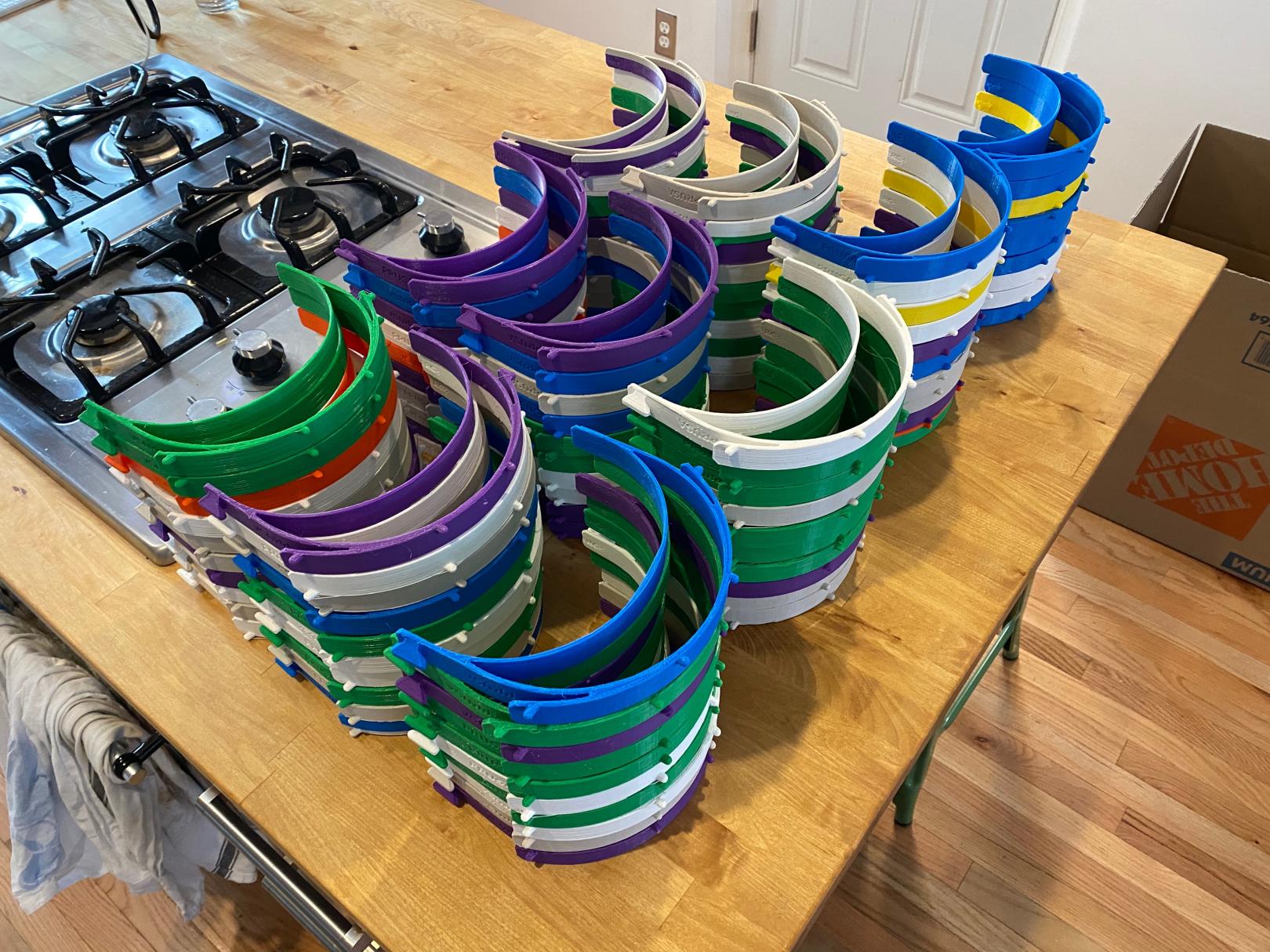
Date:
The shortage of critical personal protective equipment (PPE) is putting healthcare workers at increased risk during the COVID-19 pandemic. People worldwide have come together to produce creative solutions to combat this shortage. If you consider yourself a maker, problem-solver, or simply want to get your hands involved to help healthcare workers, this guide is for you. If you do not have the capabilities to produce the items listed below, please share with someone who might.
Disclaimer: This guide is not definitive; as with the entire COVID-19 situation, designs and guidelines surrounding their creation and distribution are constantly evolving. This document is meant to function as a collection of basic resources to inform individuals or groups how to get started. None of the items listed are guaranteed to prevent exposure, sickness, or transmission. Consult with medical professionals for all health inquiries.
Safety First
Please abide all social distancing guidelines: do not leave your residence unnecessarily to go out to the store to buy materials.
How to Help
Find a healthcare facility to donate to.
This first step is extremely important. All of these PPE items listed typically fall under the umbrella term “homemade equipment,” which not all facilities accept. Some facilities accept one design but not another. During this PPE shortage, it is ideal to be able to sterilize equipment and not all materials can be. Many facilities are being more lenient than normal due to the equipment shortages, but facilities have the final say as to what they will accept—the well-being of their staff and patients is paramount, so they aren’t going to try something that doesn’t meet their standards.
These types of donations have become increasingly common, so an internet search of the facility you choose along with the keywords “homemade PPE donations” or something similar should yield informative results. If an answer cannot be found online, try to find contact information for the facility’s equipment/supplies, procurement, donations/giving, or COVID-19-specific department. Try to find information online first before calling or emailing a site. Their resources are being stretched thin without an inundation of phone calls. Email contact is preferred and several sites have a dedicated email inbox for COVID-19 donation inquiries.
If You Can Sew
Sewn fabric masks are being used by healthcare professionals to help conserve essential N95 and surgical masks. These masks cover the nose and mouth area to provide a protective barrier for the person wearing it. There are many designs circulating online, but it is important to find one that has gone through clinical testing and approval for healthcare facilities. CoverAidPHL has a model available that has been tested and approved by multiple healthcare facilities in the great Philadelphia area.
If You Have a 3D Printer
There are two main PPE 3D printing projects right now: mask comfort bands and face shields. The mask comfort bands can be made entirely with 3D printing. Face shields need additional components that cannot be 3D-printed.
Mask comfort bands are thin, single piece bands that are paired with face masks to help reduce tension and discomfort behind the ears and head of healthcare workers caused by extensive face mask usage. These prints are thin, require little to no supports, and more than one can be fit on most medium-sized build plates.
Face shields cover the entire front of the head using a plastic barrier that combats air and splatter exposure risks. Face shields typically requires three components: a visor band, a sheet of plastic for the shield itself, and elastic or other fastener to secure it to the head. Currently, only the visor band can be 3D-printed. The other components need to be acquired separately. The elastic should be around ¼” wide, not too much more or less. Some individuals have reported using rubber bands or string, but elastic is ideal for durability and cleanability. The plastic sheet should ideally be made of PETG 0.020-0.040 thickness. Clear report covers or binder sectional dividers can be used if untouched sheets of PETG is not available, but it must cover the entire face. There are many models of face shields online that have been approved or are undergoing testing, but this is the model that we are using at The Franklin Institute.
For more clinically tested and approved 3D printable designs, check out the National Institute of Health’s collection of COVID-19 response models. This collection is updated frequently as designs are submitted and tested. However, please remember that just because the NIH approved a design does not mean that a facility is obligated to use it. Always consult with the facility’s needs first.
If You Have a Laser Cutter
Two of the three face shield components mentioned in the 3D printer section can be produced with laser cutting: the visor band and the sheet of plastic for the shield. The elastic or other fastener still needs to be acquired. Many face shield laser cut files exist online, so it is important to find out which ones healthcare facilities will accept before you start mass producing them. Here is one example with instructions.
These are just a few creative ways to help healthcare workers during the COVID-19 crisis. Scour the internet for more ways to help. Join groups of others already making PPE. Makers thrive on community, which is something we all need right now. Use that power for good! Make a difference! Make an impact!


